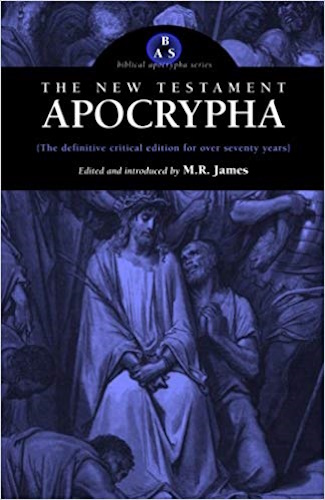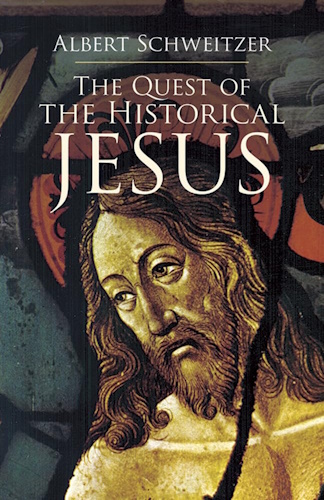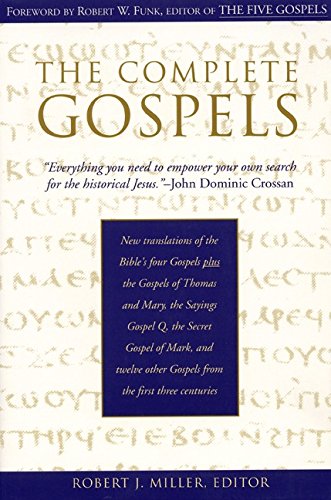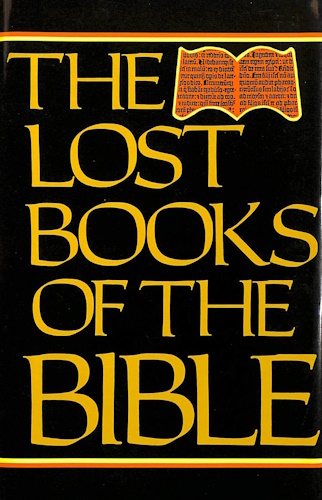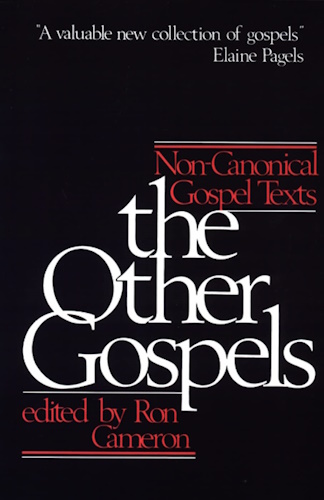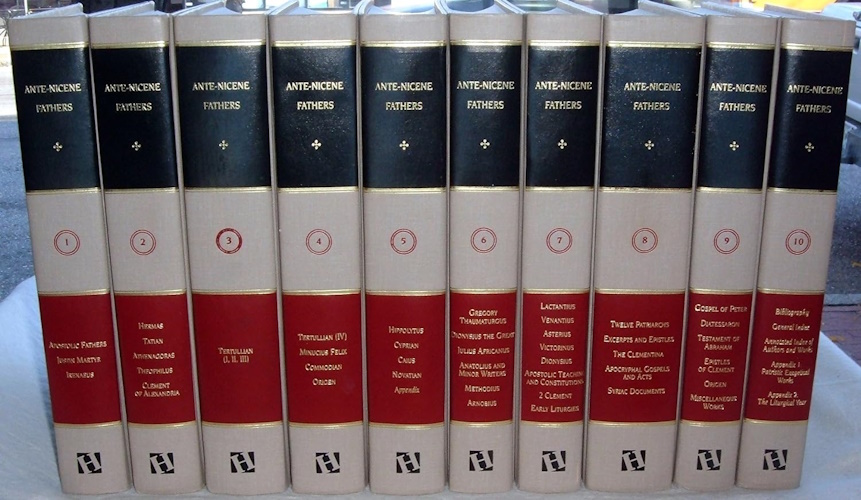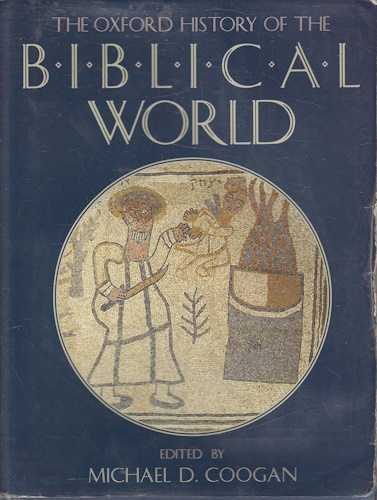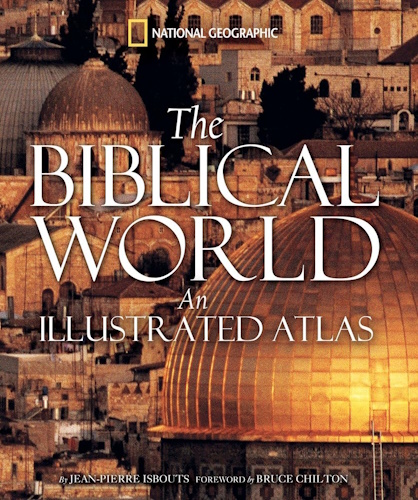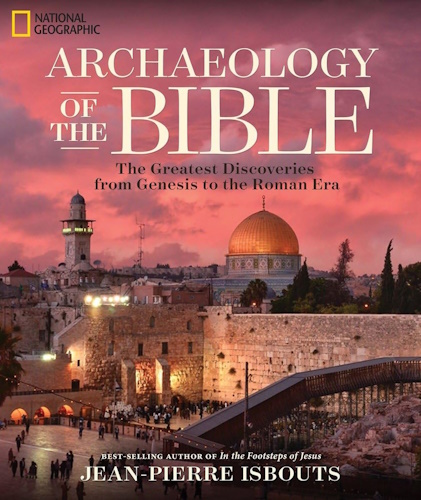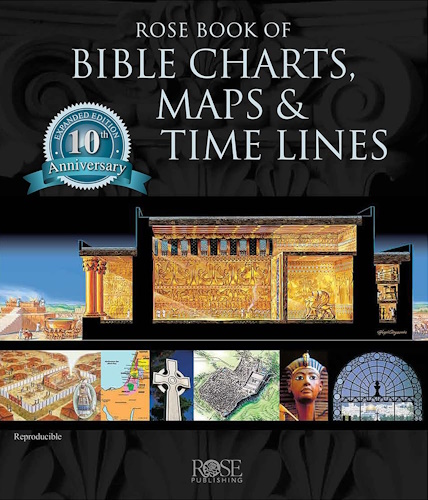
The Gospel of Thomas: First Greek Form
Translator’s Introductory Notice.
The Gospel of Thomas.—Like the Protevangelium of James, the Gospel of Thomas is of undoubted antiquity. It is mentioned by name by Origen, quoted by Irenæus and the author of the Philosophumena, who says that it was used by the Nachashenes, a Gnostic sect of the second century. Cyril of Jerusalem (d. 386) attributes the authorship not to the apostle, but to a Thomas who was one of the three disciples of Manes. This fact, of course, indicates that Cyril knew nothing of the antiquity of the book he was speaking of. This Manichæan origin has been adopted by many writers, of whom the best known are in recent times R. Simon and Mingarelli.
The text of the first Greek form is obtained from a Bologna ms. published by Mingarelli with a Latin translation in, a Dresden ms. of the sixteenth century edited by Thilo, a Viennese fragment edited by Lambecius, and a Parisian fragment first brought to light by Coteler in his, edition of the Apostolical Constitutions, and translated into English by Jones.
The second Greek form is published for the first time by Tischendorf, who got the ms., which is on paper, of the fourteenth or fifteenth century, from one of the monasteries on Mount Sinai.
The Latin form is also published for the first time, from a Vatican ms. There is another Latin text existing in a palimpsest, which Tischendorf assigns to the fifth century, and asserts to be much nearer the ancient Greek copy than any of the other mss.
It seems pretty clear, from the contents of the book, that its author was a Gnostic, a Docetist, and a Marcosian; and it was held in estimation by the Nachashenes and the Manichæans. Its bearing upon Christian art, and to some extent Christian dogma, is well known.
The Greek of the original is by no means good, and the Latin translator has in many cases mistaken the meaning of common Greek words.
First Greek Form.
Thomas the Israelite Philosopher’s Account of the Infancy of the Lord.
1. I Thomas, an Israelite, write you this account, that all the brethren from among the heathen may know the miracles of our Lord Jesus Christ in His infancy, which He did after His birth in our country. The beginning of it is as follows:—
2. This child Jesus, when five years old, was playing in the ford of a mountain stream; and He collected the flowing waters into pools, and made them clear immediately, and by a word alone He made them obey Him. And having made some soft clay, He fashioned out of it twelve sparrows. And it was the Sabbath when He did these things. And there were also many other children playing with Him. And a certain Jew, seeing what Jesus was doing, playing on the Sabbath, went off immediately, and said to his father Joseph: Behold, thy son is at the stream, and has taken clay, and made of it twelve birds, and has profaned the Sabbath. And Joseph, coming to the place and seeing, cried out to Him, saying: Wherefore doest thou on the Sabbath what it is not lawful to do? And Jesus clapped His hands, and cried out to the sparrows, and said to them: Off you go! And the sparrows flew, and went off crying. And the Jews seeing this were amazed, and went away and reported to their chief men what they had seen Jesus doing.
3. And the son of Annas the scribe was standing there with Joseph; and he took a willow branch, and let out the waters which Jesus had collected. And Jesus, seeing what was done, was angry, and said to him: O wicked, impious, and foolish! what harm did the pools and the waters do to thee? Behold, even now thou shalt be dried up like a tree, and thou shalt not bring forth either leaves, or root, or fruit. And straightway that boy was quite dried up. And Jesus departed, and went to Joseph’s house. But the parents of the boy that had been dried up took him up, bewailing his youth, and brought him to Joseph, and reproached him because, said they, thou hast such a child doing such things.
4. After that He was again passing through the village; and a boy ran up against Him, and struck His shoulder. And Jesus was angry, and said to him: Thou shalt not go back the way thou camest. And immediately he fell down dead. And some who saw what had taken place, said: Whence was this child begotten, that every word of his is certainly accomplished? And the parents of the dead boy went away to Joseph, and blamed him, saying: Since thou hast such a child, it is impossible for thee to live with us in the village; or else teach him to bless, and not to curse: for he is killing our children.
5. And Joseph called the child apart, and admonished Him, saying: Why doest thou such things, and these people suffer, and hate us, and persecute us? And Jesus said: I know that these words of thine are not thine own; nevertheless for thy sake I will be silent; but they shall bear their punishment. And straightway those that accused Him were struck blind. And those who saw it were much afraid and in great perplexity, and said about Him: Every word which he spoke, whether good or bad, was an act, and became a wonder. And when they saw that Jesus had done such a thing, Joseph rose and took hold of His ear, and pulled it hard. And the child was very angry, and said to him: It is enough for thee to seek, and not to find; and most certainly thou hast not done wisely. Knowest thou not that I am thine? Do not trouble me.
6. And a certain teacher, Zacchæus by name, was standing in a certain place, and heard Jesus thus speaking to his father; and he wondered exceedingly, that, being a child, he should speak in such a way. And a few days thereafter he came to Joseph, and said to him: Thou hast a sensible child, and he has some mind. Give him to me, then, that he may learn letters; and I shall teach him along with the letters all knowledge, both how to address all the elders, and to honour them as forefathers and fathers, and how to love those of his own age. And He said to him all the letters from the Alpha even to the Omega, clearly and with great exactness. And He looked upon the teacher Zacchæus, and said to him: Thou who art ignorant of the nature of the Alpha, how canst thou teach others the Beta? Thou hypocrite! first, if thou knowest, teach the A, and then we shall believe thee about the B. Then He began to question the teacher about the first letter, and he was not able to answer Him. And in the hearing of many, the child says to Zacchæus: Hear, O teacher, the order of the first letter, and notice here how it has lines, and a middle stroke crossing those which thou seest common; (lines) brought together; the highest part supporting them, and again bringing them under one head; with three points of intersection; of the same kind; principal and subordinate; of equal length. Thou hast the lines of the A.
7. And when the teacher Zacchæus heard the child speaking such and so great allegories of the first letter, he was at a great loss about such a narrative, and about His teaching. And He said to those that were present: Alas! I, wretch that I am, am at a loss, bringing shame upon myself by having dragged this child hither. Take him away, then, I beseech thee, brother Joseph. I cannot endure the sternness of his look; I cannot make out his meaning at all. That child does not belong to this earth; he can tame even fire. Assuredly he was born before the creation of the world. What sort of a belly bore him, what sort of a womb nourished him, I do not know. Alas! my friend, he has carried me away; I cannot get at his meaning: thrice wretched that I am, I have deceived myself. I made a struggle to have a scholar, and I was found to have a teacher. My mind is filled with shame, my friends, because I, an old man, have been conquered by a child. There is nothing for me but despondency and death on account of this boy, for I am not able at this hour to look him in the face; and when everybody says that I have been beaten by a little child, what can I say? And how can I give an account of the lines of the first letter that he spoke about? I know not, O my friends; for I can make neither beginning nor end of him. Therefore, I beseech thee, brother Joseph, take him home. What great thing he is, either god or angel, or what I am to say, I know not.
8. And when the Jews were encouraging Zacchæus, the child laughed aloud, and said: Now let thy learning bring forth fruit, and let the blind in heart see. I am here from above, that I may curse them, and call them to the things that are above, as He that sent me on your account has commanded me. And when the child ceased speaking, immediately all were made whole who had fallen under His curse. And no one after that dared to make Him angry, lest He should curse him, and he should be maimed.
9. And some days after, Jesus was playing in an upper room of a certain house, and one of the children that were playing with Him fell down from the house, and was killed. And, when the other children saw this, they ran away, and Jesus alone stood still. And the parents of the dead child coming, reproached…and they threatened Him. And Jesus leaped down from the roof, and stood beside the body of the child, and cried with a loud voice, and said: Zeno—for that was his name—stand up, and tell me; did I throw thee down? And he stood up immediately, and said: Certainly not, my lord; thou didst not throw me down, but hast raised me up. And those that saw this were struck with astonishment. And the child’s parents glorified God on account of the miracle that had happened, and adored Jesus.
10. A few days after, a young man was splitting wood in the corner, and the axe came down and cut the sole of his foot in two, and he died from loss of blood. And there was a great commotion, and people ran together, and the child Jesus ran there too. And He pressed through the crowd, and laid hold of the young man’s wounded foot, and he was cured immediately. And He said to the young man: Rise up now, split the wood, and remember me. And the crowd seeing what had happened, adored the child, saying: Truly the Spirit of God dwells in this child. 397
11. And when He was six years old, His mother gave Him a pitcher, and sent Him to draw water, and bring it into the house. But He struck against some one in the crowd, and the pitcher was broken. And Jesus unfolded the cloak which He had on, and filled it with water, and carried it to His mother. And His mother, seeing the miracle that had happened, kissed Him, and kept within herself the mysteries which she had seen Him doing.
12. And again in seed-time the child went out with His father to sow corn in their land. And while His father was sowing, the child Jesus also sowed one grain of corn. And when He had reaped it, and threshed it, He made a hundred kors; and calling all the poor of the village to the threshing-floor, He gave them the corn, and Joseph took away what was left of the corn. And He was eight years old when He did this miracle.
13. And His father was a carpenter, and at that time made ploughs and yokes. And a certain rich man ordered him to make him a couch. And one of what is called the cross pieces being too short, they did not know what to do. The child Jesus said to His father Joseph: Put down the two pieces of wood, and make them even in the middle. And Joseph did as the child said to him. And Jesus stood at the other end, and took hold of the shorter piece of wood, and stretched it, and made it equal to the other. And His father Joseph saw it, and wondered, and embraced the child, and blessed Him, saying: Blessed am I, because God has given me this child.
14. And Joseph, seeing that the child was vigorous in mind and body, again resolved that He should not remain ignorant of the letters, and took Him away, and handed Him over to another teacher. And the teacher said to Joseph: I shall first teach him the Greek letters, and then the Hebrew. For the teacher was aware of the trial that had been made of the child, and was afraid of Him. Nevertheless he wrote out the alphabet, and gave Him all his attention for a long time, and He made him no answer. And Jesus said to him: If thou art really a teacher, and art well acquainted with the letters, tell me the power of the Alpha, and I will tell thee the power of the Beta. And the teacher was enraged at this, and struck Him on the head. And the child, being in pain, cursed him; and immediately he swooned away, and fell to the ground on his face. And the child returned to Joseph’s house; and Joseph was grieved, and gave orders to His mother, saying: Do not let him go outside of the door, because those that make him angry die.
15. And after some time, another master again, a genuine friend of Joseph, said to him: Bring the child to my school; perhaps I shall be able to flatter him into learning his letters. And Joseph said: If thou hast the courage, brother, take him with thee. And he took Him with him in fear and great agony; but the child went along pleasantly. And going boldly into the school, He found a book lying on the reading-desk; and taking it, He read not the letters that were in it, but opening His mouth, He spoke by the Holy Spirit, and taught the law to those that were standing round. And a great crowd having come together, stood by and heard Him, and wondered at the ripeness of His teaching, and the readiness of His words, and that He, child as He was, spoke in such a way. And Joseph hearing of it, was afraid, and ran to the school, in doubt lest his master too should be without experience. And the master said to Joseph: Know, brother, that I have taken the child as a scholar, and he is full of much grace and wisdom; but I beseech thee, brother, take him home. And when the child heard this, He laughed at him directly, and said: Since thou hast spoken aright, and witnessed aright, for thy sake he also that was struck down shall be cured. And immediately the other master was cured. And Joseph took the child, and went away home.
16. And Joseph sent his son James to tie up wood and bring it home, and the child Jesus also followed him. And when James was gathering the fagots, a viper bit James’ hand. And when he was racked with pain, and at the point of death, Jesus came near and blew upon the bite; and the pain ceased directly, and the beast burst, and instantly James remained safe and sound.
17. And after this the infant of one of Joseph’s neighbours fell sick and died, and its mother wept sore. And Jesus heard that there was great lamentation and commotion, and ran in haste, and found the child dead, and touched his breast, and said: I say to thee, child, be not dead, but live, and be with thy mother. And directly it looked up and laughed. And He said to the woman: Take it, and give it milk, and remember me. And seeing this, the crowd that was standing by wondered, and said: Truly this child was either God or an angel of God, for every word of his is a certain fact. And Jesus went out thence, playing with the other children.
18. And some time after there occurred a great commotion while a house was building, and Jesus stood up and went away to the place. And seeing a man lying dead, He took him by the hand, and said: Man, I say to thee, arise, and go on with thy work. And directly he rose up, and adored Him. And seeing this, the crowd wondered, and said: This child is from heaven, for he has saved many souls from death, and he continues to save during all his life.
19. And when He was twelve years old His parents went as usual to Jerusalem to the feast of the passover with their fellow-travellers. And after the passover they were coming home again. And while they were coming home, the child Jesus went back to Jerusalem. And His parents thought that He was in the company. And having gone one day’s journey, they sought for Him among their relations; and not finding Him, they were in great grief, and turned back to the city seeking for Him. And after the third day they found Him in the temple, sitting in the midst of the teachers, both hearing the law and asking them questions. And they were all attending to Him, and wondering that He, being a child, was shutting the mouths of the elders and teachers of the people, explaining the main points of the law and the parables of the prophets. And His mother Mary coming up, said to Him: Why hast thou done this to us, child? Behold, we have been seeking for thee in great trouble. And Jesus said to them: Why do you seek me? Do you not know that I must be about my Father’s business? And the scribes and the Pharisees said: Art thou the mother of this child? And she said: I am. And they said to her: Blessed art thou among women, for God hath blessed the fruit of thy womb; for such glory, and such virtue and wisdom, we have neither seen nor heard ever. And Jesus rose up, and followed His mother, and was subject to His parents. And His mother observed all these things that had happened. And Jesus advanced in wisdom, and stature, and grace. To whom be glory for ever and ever. Amen.
![]()
![]()
-
Urantia Book, 44:0.11 - The Celestial Artisans
Never in your long ascendancy will you lose the power to recognize your associates of former existences. Always, as you ascend inward in the scale of life, will you retain the ability to recognize and fraternize with the fellow beings of your previous and lower levels of experience. Each new translation or resurrection will add one more group of spirit beings to your vision range without in the least depriving you of the ability to recognize your friends and fellows of former estates.
-
Princess Bride 1987 Wallace Shawn (Vizzini) and Mandy Patinkin (Inigo Montoya)
Vizzini: HE DIDN'T FALL? INCONCEIVABLE.
Inigo Montoya: You keep using that word. I do not think it means what you think it means. -
Urantia Book, 117:4.14 - The Finite God
And here is mystery: The more closely man approaches God through love, the greater the reality -- actuality -- of that man. The more man withdraws from God, the more nearly he approaches nonreality -- cessation of existence. When man consecrates his will to the doing of the Father's will, when man gives God all that he has, then does God make that man more than he is.
-
Urantia Book, 167:7.4 - The Talk About Angels
"And do you not remember that I said to you once before that, if you had your spiritual eyes anointed, you would then see the heavens opened and behold the angels of God ascending and descending? It is by the ministry of the angels that one world may be kept in touch with other worlds, for have I not repeatedly told you that I have other sheep not of this fold?"
-
Urantia Book, Foreword - 0:12.12 - The Trinities
But we know that there dwells within the human mind a fragment of God, and that there sojourns with the human soul the Spirit of Truth; and we further know that these spirit forces conspire to enable material man to grasp the reality of spiritual values and to comprehend the philosophy of universe meanings. But even more certainly we know that these spirits of the Divine Presence are able to assist man in the spiritual appropriation of all truth contributory to the enhancement of the ever-progressing reality of personal religious experience—God-consciousness.
-
Urantia Book, 1:4.3 - The Mystery Of God
When you are through down here, when your course has been run in temporary form on earth, when your trial trip in the flesh is finished, when the dust that composes the mortal tabernacle "returns to the earth whence it came"; then, it is revealed, the indwelling "Spirit shall return to God who gave it." There sojourns within each moral being of this planet a fragment of God, a part and parcel of divinity. It is not yet yours by right of possession, but it is designedly intended to be one with you if you survive the mortal existence.
-
Urantia Book, 1:4.1 - The Mystery Of God
And the greatest of all the unfathomable mysteries of God is the phenomenon of the divine indwelling of mortal minds. The manner in which the Universal Father sojourns with the creatures of time is the most profound of all universe mysteries; the divine presence in the mind of man is the mystery of mysteries.
-
Urantia Book, 1:4.6 - The Mystery Of God
To every spirit being and to every mortal creature in every sphere and on every world of the universe of universes, the Universal Father reveals all of his gracious and divine self that can be discerned or comprehended by such spirit beings and by such mortal creatures. God is no respecter of persons, either spiritual or material. The divine presence which any child of the universe enjoys at any given moment is limited only by the capacity of such a creature to receive and to discern the spirit actualities of the supermaterial world.
-
Urantia Book, 11:0.1 - The Eternal Isle Of Paradise
Paradise is the eternal center of the universe of universes and the abiding place of the Universal Father, the Eternal Son, the Infinite Spirit, and their divine co-ordinates and associates. This central Isle is the most gigantic organized body of cosmic reality in all the master universe. Paradise is a material sphere as well as a spiritual abode. All of the intelligent creation of the Universal Father is domiciled on material abodes; hence must the absolute controlling center also be material, literal. And again it should be reiterated that spirit things and spiritual beings are real.
-
Urantia Book, 50:6.4 - Planetary Culture
Culture presupposes quality of mind; culture cannot be enhanced unless mind is elevated. Superior intellect will seek a noble culture and find some way to attain such a goal. Inferior minds will spurn the highest culture even when presented to them ready-made.
-
Urantia Book, 54:1.6 - True And False Liberty
True liberty is the associate of genuine self-respect; false liberty is the consort of self-admiration. True liberty is the fruit of self-control; false liberty, the assumption of self-assertion. Self-control leads to altruistic service; self-admiration tends towards the exploitation of others for the selfish aggrandizement of such a mistaken individual as is willing to sacrifice righteous attainment for the sake of possessing unjust power over his fellow beings.
-
Urantia Book, 54:1.9 - True And False Liberty
How dare the self-willed creature encroach upon the rights of his fellows in the name of personal liberty when the Supreme Rulers of the universe stand back in merciful respect for these prerogatives of will and potentials of personality! No being, in the exercise of his supposed personal liberty, has a right to deprive any other being of those privileges of existence conferred by the Creators and duly respected by all their loyal associates, subordinates, and subjects.
-
Urantia Book, 54:1.8 - True And False Liberty
There is no error greater than that species of self-deception which leads intelligent beings to crave the exercise of power over other beings for the purpose of depriving these persons of their natural liberties. The golden rule of human fairness cries out against all such fraud, unfairness, selfishness, and unrighteousness.
